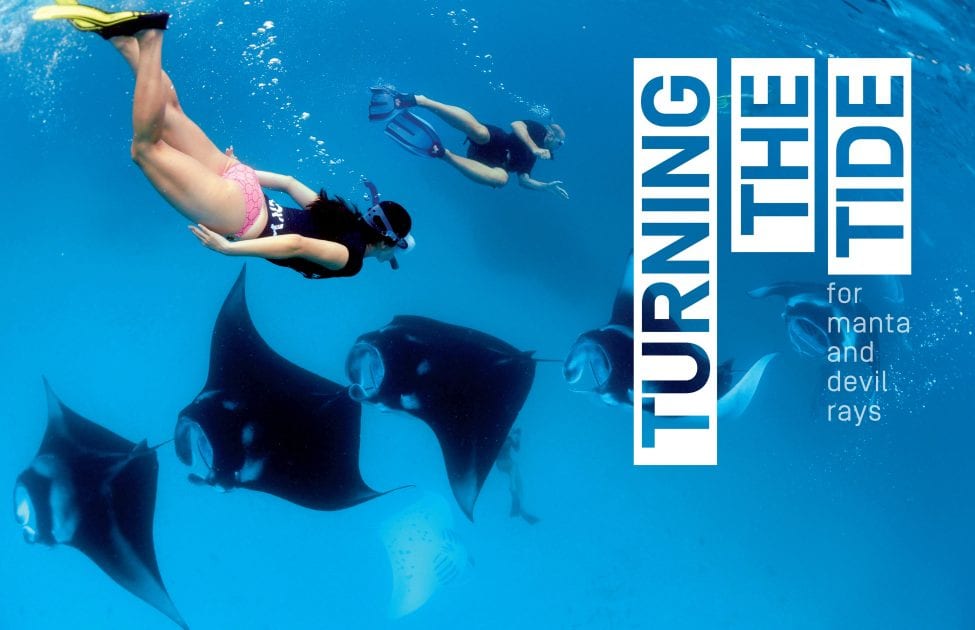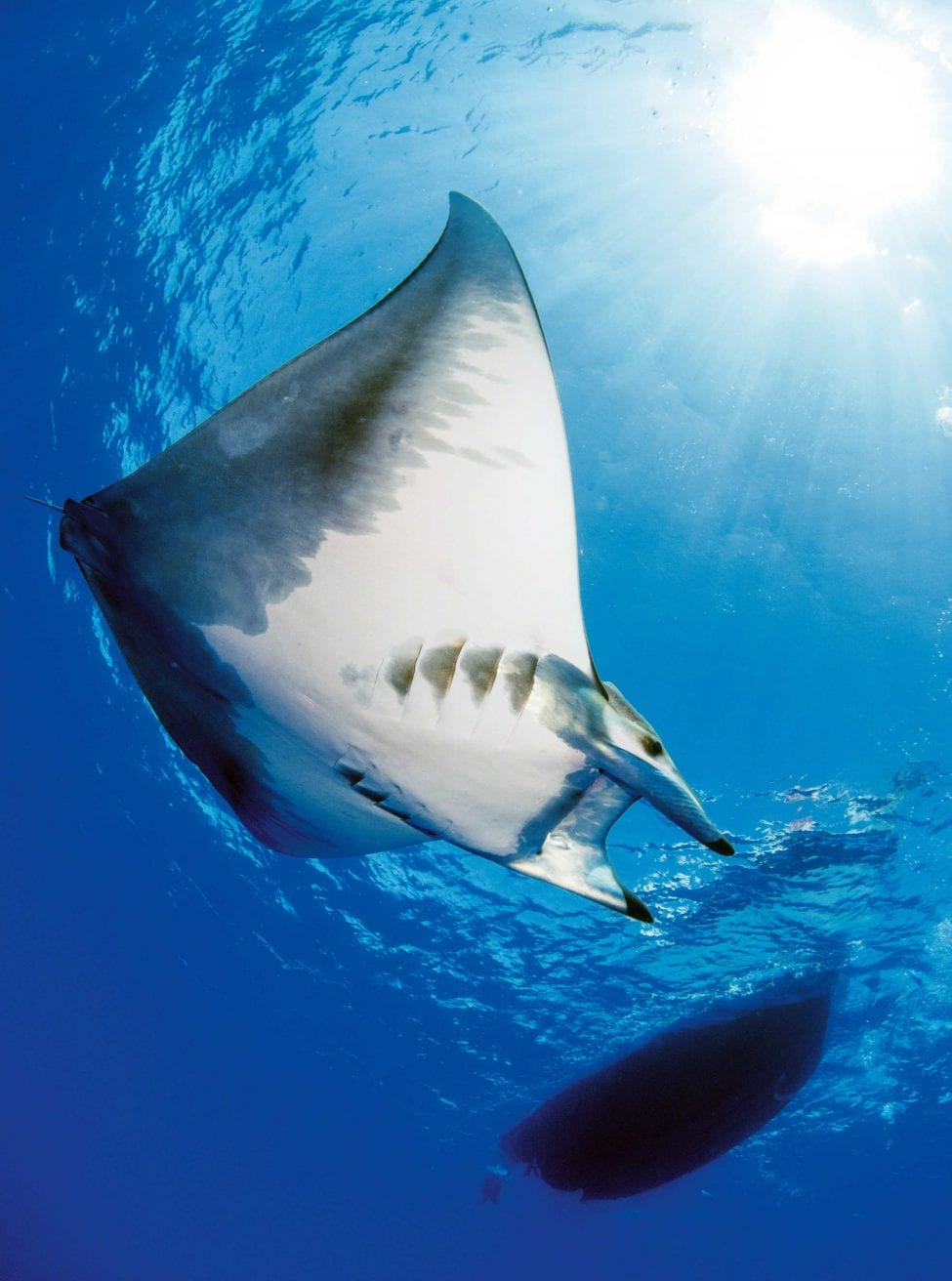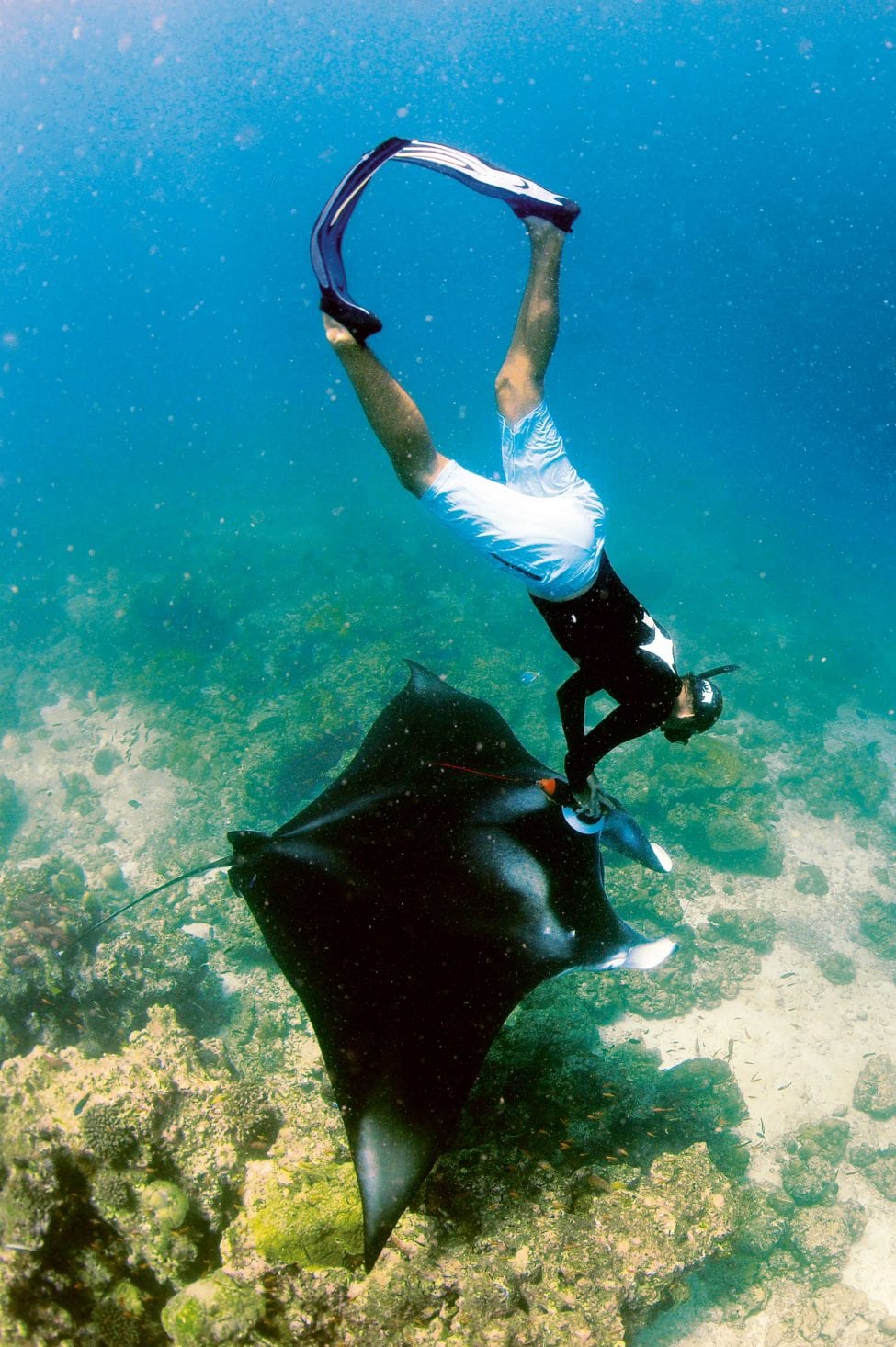Turning the tide for manta and devil rays
Having begun with a vision – to see experts in a range of fields working around the world to protect manta and devil rays – the Manta Trust eight years on has a long and laudable list of achievements. The charity’s head of conservation strategy, Isabel Ender, looks back over what it has accomplished.
In 2010, after two depressing weeks of counting and photographing dead manta and devil rays at fish markets in Sri Lanka, two good friends returned to their lodgings to try and wash away the smell of dead fish. At dinner that night, with the scent and memories of the day’s work still lingering, the discussion turned to the alarming threats facing these rays globally. There was talk about the use of the rays’ gill plates as an Asian health tonic, a practice that was driving international trade and targeted fisheries, and about the impacts of by-catch, climate change and the development of tourism. After dinner an idea emerged that a global network of experts could be created and they would work together specifically to conserve manta rays and their relatives. The network would cover a range of expertise (scientists, media specialists, fundraisers, policy experts) to effectively protect these species from the increasing threats they face globally. That night, the friends reached out to a handful of colleagues – and in doing so laid the foundations for the Manta Trust charity.
Fast forward eight years and the Manta Trust has become the world’s leading organisation dedicated to the conservation of manta rays, their relatives and their habitat. Our network spans 23 countries via affiliated projects, collaborations and partnerships with scientific institutes, NGOs and some of the most passionate conservationists and media experts imaginable. We are supported by great funders, including the Save Our Seas Foundation and Shark Conservation Fund, and can look back at a track record of incredible achievements.
The Manta Trust
Having started out in the Maldives, the Manta Trust is now active in about 16 countries worldwide promoting the conservation of manta and devil rays and their habitat through research, awareness and education. Three of its current major operations are the Global Mobulid ID Project, which aims to provide a taxonomic, morphological and genetic identification guide to manta and devil rays; the collection of data about ray landings in India, which will inform conservation management in that country; and the Indonesian Manta Project, which works to promote an appreciation of manta and devil rays among local people.



